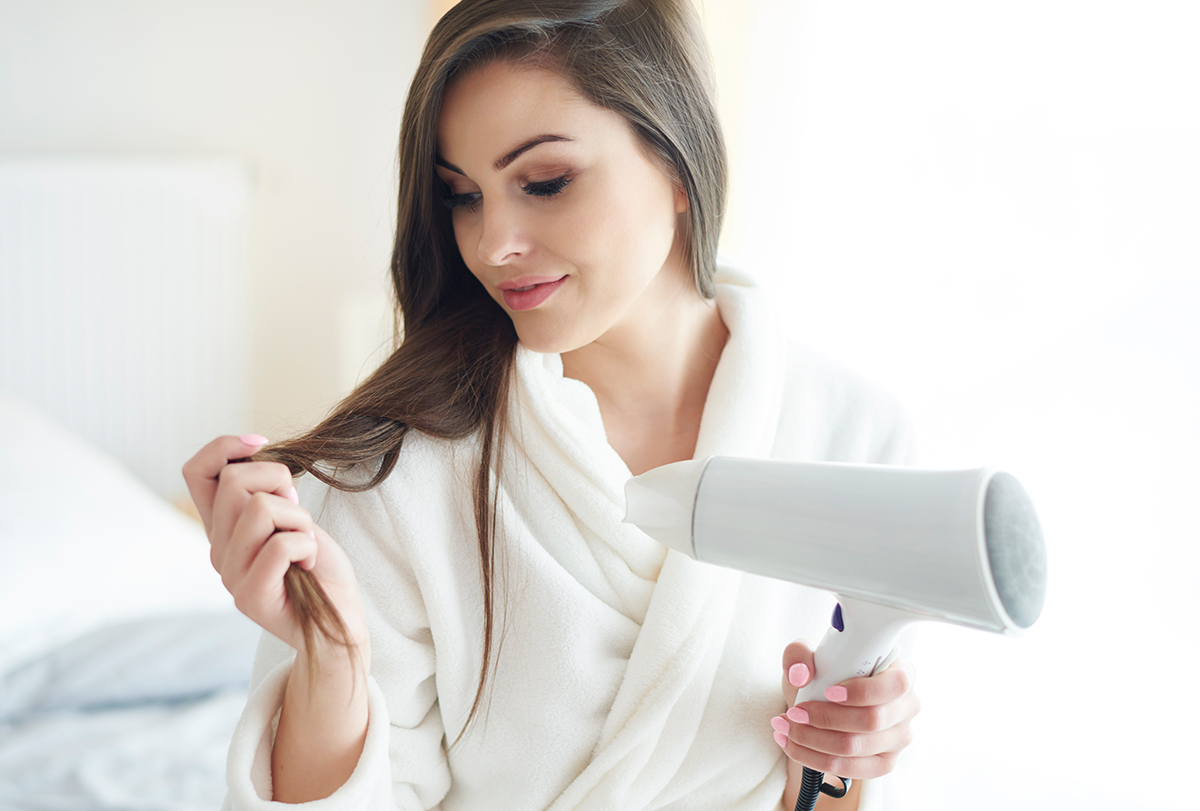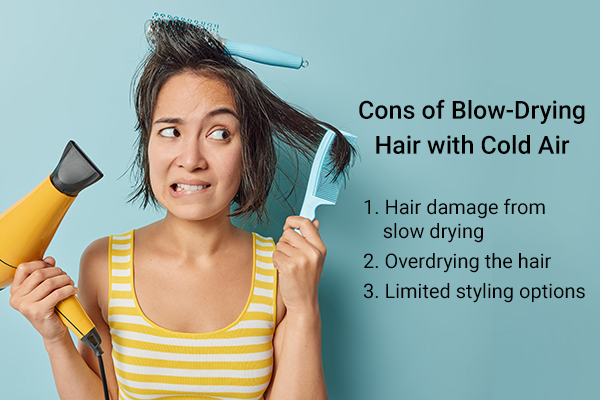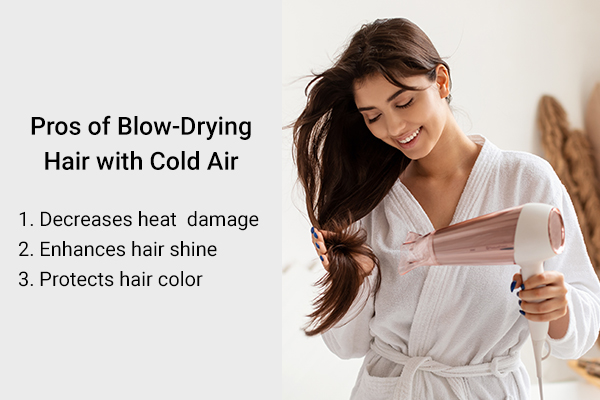In this article:
Styling hair is a fun task for a lot of people. To be able to change your entire look simply by styling your hair in a certain way is a boon. But styling comes with cons.

Styling hair often involves heat application or the use of chemical-filled products, which can potentially cause hair damage. This is why many people can be seen asking questions about the best methods for styling hair while also maintaining hair health.
One such common question in the world of hair care is: Does using cold air for blow-drying harm the hair?
The answer to this query is not a simple yes or no. While cold air is much gentler than hot air and does not damage the hair as much as heat does, it still can have certain negative effects on hair health.
This article will look into the process of cold-air blow-drying and uncover the truth about its impact on your hair.
Cons of Blow-Drying Hair with Cold Air
Blow-drying with cold air is often considered a safer alternative to hot air, but it’s essential to understand that it’s not entirely risk-free.
When it comes to blow-drying hair, it is a common belief that using cold air is the gentler option. It’s true, there are some advantages to it such as reducing heat damage (1) and leaving your hair looking sleek.

However, before you get too comfortable, it’s important to know that cold-air drying isn’t entirely without risks.
1. Hair damage from slow drying
Cold air takes a longer time to dry your hair than hot air. Unlike the quick efficiency of hot air, cold air moves at a slow pace.
If you have hair that tends to soak up water swiftly, it might absorb more moisture than it should during a slow-drying session. This overexposure to moisture could lead to swelling and potential hair damage, according to many experts.
2. Overdrying the hair
Long exposure to cold air while blow-drying can lead to overdrying of the hair. This can leave your hair dehydrated and brittle.
Unfortunately, dry and brittle hair is very prone to breaking and splitting, which are harmful to hair health.
3. Limited styling options
Styling with cold air isn’t as effective as it is with hot air, according to hair stylists.
While hot air sets your hairstyle beautifully, cold air may not be able to do so. This leads to frustration and the temptation to switch between the warm and cold settings.
However, going between hot and cold air isn’t a good idea and can lead to more harm than good.
Pros of Blow-Drying Hair with Cold Air

Blow-drying hair using cold air also offers some benefits.
1. Decreases heat damage
The most notable advantage of cold-air drying is that you’ll free yourself from heat-related damage.
According to a study, the frequent use of hair dryers can lead to hair damage, including issues such as roughness, dryness, and even fading of hair color. (1)(2)
Moreover, researchers found that the higher temperatures from the hair dryer caused surface damage to the hair, making it rougher. (1)
2. Enhances hair shine
Experts claim that cold air has the ability to seal the hair’s cuticles, which not only results in smooth and shiny strands but also acts as a natural defense mechanism against external stressors such as humidity and pollutants.
3. Protects hair color
Drying with hot air is often associated with fading of hair color (1). If you have a vibrant hair color, cold-air drying can be a very good alternative. It helps maintain the vibrancy of the hair color, ensuring it doesn’t fade prematurely.
How to Minimize Damage When Blow-Drying Hair Using Cold Air?
If you’re determined to give cold-air blow-drying a try without risking your hair health, here are some tips:
- Keep your cold-air sessions short to avoid prolonged exposure.
- Always use a heat-protectant spray, even when using cold air, to protect your hair.
- Gently dry your hair with a towel/cloth before starting the blow-drying process.
- Use hydrating hair products in your hair care routine.
Most-Asked Questions
Which is faster for drying hair: cold air or hot air?
Hot air is more efficient and much faster in drying your hair than cold hair.
Can I use both hot air and cold air for drying hair?
You can do initial drying with a hot setting and then use cold air toward the end to seal in your cuticles and add shine.
Final Word
Cold-air blow-drying can be a safe choice if you use it wisely. Understand your hair’s unique needs, and handle the cold setting with care. After all, your hair deserves the best treatment, whether it’s with warm or cold air.
- Was this article helpful?
- YES, THANKS!NOT REALLY


